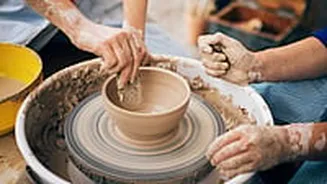Many kids love the joy involved in making their hands messy and creating artefacts out of them. Pottery is an ancient artform that allows people to use their hands and creative caps to spin magic out of easy
materials like clay. Be it practical use or innovative indulgence, the final outcomes of this activity deliver multiple benefits to all who engage in this craft.
Here’s a beginner’s guide to taking up pottery at home:
Types
Before you go around traipsing for materials, the task begins from deciding which type of pottery you wish to take up. Depending on your skill level, financial investment and personal interests, you possess free will to pick from multiple techniques. Hand moulding techniques like slab pottery involve joining rolled slabs of clay to create a sharp piece while coil pots require one to layer several strips of material to create a product. Pinch pottery is a technique used to create pieces by pinching clay between the thumb and fingers and is particularly suited for children.
Materials required
Once you have decided on your type, you can proceed to head to the market and purchase the required materials. Beginners may opt for air-dried clay to avoid using a kiln in the end process while those more advanced can pick ceramic to design pieces with wider usage. Grog are fired granular pieces of clay that are added to the material to make it more sturdy while moulding. A potter’s wheel is a must for those who wish to go for the classic techniques instead of hand moulding. Stoneware clay works best for beginners and you can gradually proceed to porcelain and earthenware alternatives with time. Make sure to keep a water bowl nearby to use throughout.
Process






